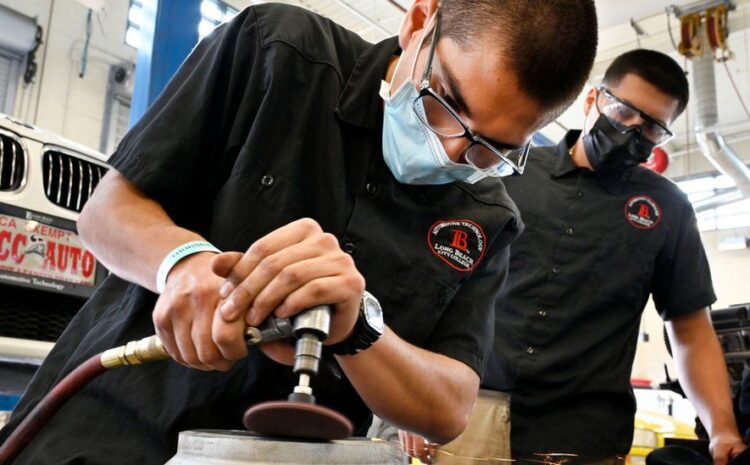
IMAGE SOURCE, GETTY IMAGES
Employers added 467,000 jobs, the Labor Department said. That was far better than analysts had predicted.
The jobless rate inched up from 3.9% in December to 4%, but that was due to more people looking for work.
Analysts said the robust job creation was likely to add to the pressure on the US central bank to raise interest rates next month.
The monthly survey also revised up its estimates for hiring in December, providing more support for those who say the economy will remain strong even as officials withdraw stimulus policies put in place at the start of the pandemic in 2020.
“This is a big positive surprise,” said Brian Coulton, chief economist at Fitch Ratings. “It confirms that each successive wave of the virus is having a smaller and smaller impact on activity and labour demand.”
The central bank is under pressure to rein in inflation, which is rising at its fastest pace in nearly 40 years. In the UK, the Bank of England has already raised interest rates twice in the past three months.
President Joe Biden, whose approval ratings have sagged amid widespread concerns about inflation, acknowledged the cost-of-living pressures in remarks celebrating the jobs figures.
He said his administration was working to address the issues, including by encouraging investment in areas that have been hit by shortages, such as microchips.
He also pushed Congress to move forward with his administration’s currently stalled spending proposals, which he said would provide relief through programmes like subsidised childcare for families.
“We’re still going to work on gas prices, we’re still going to work on food prices,” he said. “In the meantime, there’s a lot we can do to give these families a little extra breathing room.”
The latest jobs report showed the average hourly wage has increased by 5.7% over the last 12 months – a stark acceleration from the meager gains seen in recent years. However, the jump does not keep pace with the fast pace of price increases hitting the economy.
Still, there are signs the pay gains are helping to lure people back into the workforce. The share of people working or looking for work last month exceeded 62% for the first time since the pandemic hit.
Women’s participation has picked up especially in recent months, as schools and nurseries reopen.
Restaurants and bars helped to drive the hiring in the US in January. Retailers, warehouse, and transportation businesses also added workers.
However, the report showed Omicron still took a toll. About six million people said they did not work or saw their hours cut due to the pandemic – almost double the prior month.
